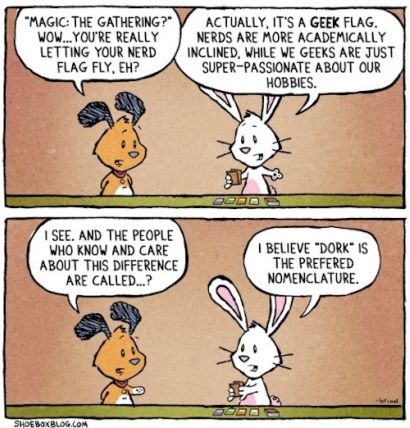I am somewhat deviant, but only to a small degree which I will mention soon. When zoomed out to the larger picture, according to society, I am not considered deviant. I have been obeying rules most of my life with the help of my mother who strictly wanted to mold a perfect daughter to avoid being labeled as a failure and a bad mother. According to the labeling theory, if deviance is created by society (Becker, as cited in Thio, Calhoun, and Conyers, 2010), then the norm is also defined as well. In this case, as an obedient person that follows the rules, I am not considered deviant. By following rules, I have not been labeled as an outsider (Becker, as cited in Thio, Calhoun, and Conyers, 2010), but kept my position as an insider. However, when I was around 18, I introduced to my friends and family the concept of deviance. I did not break any of the laws laid by society, but I broke the tradition of love relationships, especially for someone that age. Instead of having a partner who lives near me, I just happened to fall in love with a guy online. On top of that, I had met him on a MMORPG (massively multiplayer online role-playing game), which is not the normal place to find love interests. Eventually, he came to visit me in Canada, my homeland, and stayed over at my place every summer (yes, with my parents too!). After three years, we’ve decided to get married and I was going through an immigration process. After these events, I now have labels such as “immigrant”, “online relationships”, and “young married couple”. My experiences can be shared along with others who have the same label as I do (Becker, as cited in Thio, Calhoun, and Conyers, 2010), which I have done when people are having long-distance or online relationship problems or immigration questions (also with the stigma that comes along with the labels). At first, my situation was problematic because my family and peers were trying to warn me of the potential failures that could happen to me, by falling in love with an outsider and by living in a new area alone. In other words, we had a conflict of norms since I wasn’t in a regular relationship and my behavior was recognized as deviant according to my peers (Becker, as cited in Thio, Calhoun, and Conyers, 2010). “He might cheat on you, after all, you met him online!”, “early marriages will most likely fail”, and “don’t go!” are what I hear the most from my peers. Luckily, my friends and family eventually understood my intentions and my new life went well.
My strong sense to avoid rule-breaking (besides the exception mentioned previously) could also be explained by the control theory, which has four components: attachment, commitment, involvement, and belief (Hirschi, as cited in Thio, Calhoun, and Conyers, 2010). First, having a lack of attachment to the society can create deviance in an individual since he/she has been alienated by his peers. In my case, I have support from family and a couple good friends, which is why my most of my actions are not deviant since they are expected to be normal according to them. Second, people have a commitment to not break the rules since they fear punishment. Commitment is one of the huge components that explain my lack of deviance. I do not want to break any rules that may put my future at risk, which explains why most of my behaviors are normal. Third, involvement explains how a person is too busy with his life with conventional activities. My life is not as busy as a person who has a full-time job with children to take care of after work, but I do have a part-time job while going to school full-time. By having to do homework, attending classes and work, I have little time to think about or to do deviant acts. Lastly, deviance can be explained by the deviant’s beliefs and whether they are also shared among the society. I believe in the rules that I have which are also commonly valued in my group. For example, I pay my bills on time and I do not steal. Everyone I know believes in those same values.
As the date approached to do a deviant act for this blog post, I was really nervous. As a person who prefers to conform to the norms, I really had no idea what to do. Even the thought of going in an elevator and standing in the opposite direction compared to everybody already gives me a lot of stress. As I heard what my classmates were going to do, it seems like most of them were able to perform a deviant act as if it were nothing special or out of ordinary. It makes me wonder, could their behaviors be explained from the differential association theory? Since criminal behavior can be learned (Sutherland and Cressey, as cited in Thio, Calhoun, and Conyers, 2010), so are deviant acts then. Perhaps, these classmates of mine have deviant siblings or peers that could have shaped their easy-going attitude when performing deviant acts. In my situation, my family has a strong sense of justice and my brother is probably the most perfect man I’ve ever met. I also don’t recall my friends being deviants either. After thinking about my deviant task for a long time, I have decided to go for something easy but also irritating to the general public: paying my purchase in small change.
I went to Target, Winco, and Wal-Mart. All of these stores are always packed with customers in my neighbourhood, so imagine the pressure I have gotten when I decided to pay with small change! Luckily for them, my purchase was small, between 1 and 3 dollars. When I started to fish for change in my wallet, for all of these instances, I felt like I was more aware of my deviant act than the rest of the people. I knew that, according to the norm, I was to either give the cashier my credit card for a smooth and easy transaction or to pay with a large bill. Instead, I was stalling everyone’s time by paying with small change. As I was looking for my penny or a dime, the clock seems to tick louder. I felt like I was hurried on my behalf and from others. Today, we have created many convenient ways to facilitate our busy daily lives, such as simple payment transactions in our capitalist society. Credit cards are now widely accepted and used and even strongly encouraged to build a large credit. However, to see someone pay with pennies, dimes, and nickels, it seems as if the person has come from another world. One would even assume whether the person is poor or not, since collecting and paying change are associated with the poor (like beggars). In my case, I did not look poor due to my race (the stereotype that Asians are rich, especially the immigrants) and my overall image so I’m assuming that people thought I only wanted to get rid of my change. It would have been interesting to see people’s reaction if I tried to dress like a beggar. I doubt it would have worked though because young Asian female beggars seem to be non-existent, especially in my neighbourhood. There were no rewards in paying with small change, however, it is an annoyance. I wouldn’t call it a harm, but I assume that stalling people’s precious time during transaction could be really frustrating. What if the person was really in a hurry? Luckily, nobody confronted me directly, but I did feel their frustrated auras (could be an illusion) and strong stares at me and my wallet. In the past, there were a couple times when a person in front of me could not get their card to work or were looking for change. Even I felt frustrated and wished he/she would hurry up. That’s just how norms, like paying with a credit card or with a large bill during transactions, have been shaped thanks to our busy lifestyle.
Word Count: 1,368
References
Thio, Alex, Thomas C. Calhoun, and Addrain Conyers. 2010. Readings in Deviant Behavior. 6th ed. Boston, MA: Allyn & Bacon.























